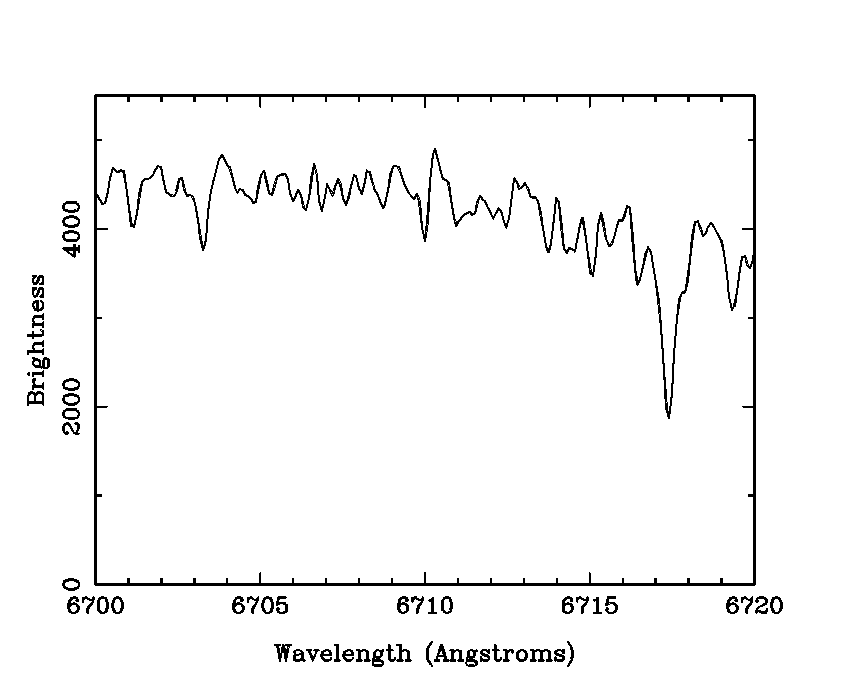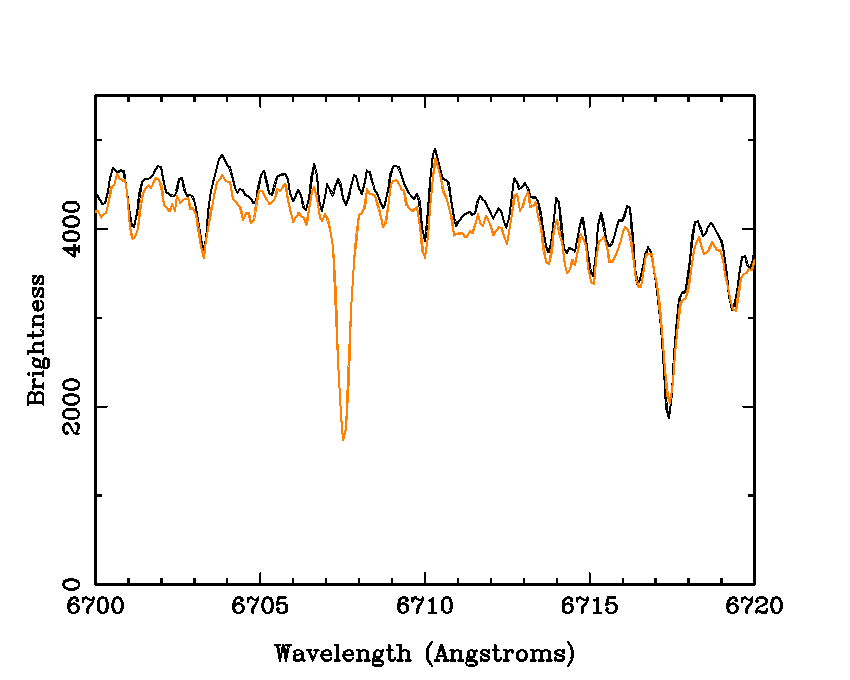FOR RELEASE:
YOUNG STARS FOUND
NEAR EARTH; IDEAL FOR STUDYING PLANET
FORMATION
Astronomers are announcing today the discovery of young stars that
are only a few hundred light years away.
This work, presented at the American Astronomical Society Meeting in
"What makes these stars interesting is that their ages
are just right for them to be forming planets right now, and their proximity to
Earth makes them easier to observe" said Jensen, Assistant Professor of Astronomy
at
Like many astronomical discoveries, this work did not
involve discovering new stars, but rather learning new things about stars whose
existence has been known for a long time.
"What's new here is our realization of how young these stars
are," said Rabi Whitaker, a
The evidence for the stars' youth comes from observations
made with the National Science Foundation's Blanco 4-meter (159-inch) Telescope
at Cerro Tololo Inter-American Observatory in
While it was once believed that star formation occurred only
in large clouds of gas and dust, observations over the past ten years have indicated
that at least some stars are formed in relatively small groups, and that some
of these groups are nearby, only 100 to 200 light years away. In the early 1990s, a Brazilian team led by
Carlos Torres and Ramiro de la Reza uncovered a nearby group of stars in the
constellation of Hydra. Since then, a number
of small, nearby groups of stars have been found by the Brazilian team and by
other researchers. The discovery announced today adds additional stars to the
list of young, nearby stars. "We've
been trying to go about this systematically, searching across the entire sky
for stars like these," said Jensen, "and we're finding a number of previously-undiscovered
groups of young stars." In addition
to the stars announced today, Jensen said that more groups are likely to be found
in the near future; the team has more observations of promising candidates
scheduled for this coming April to check additional stars for signs of youth.
Even when considering only relatively nearby stars, there
are millions of objects, so the researchers needed some way to narrow down the
list of possibilities before going to the telescope to make new observations. Such needle-in-a-haystack work was made
possible by recent space missions that have mapped the sky at various
wavelengths. Young stars emit copious amounts of X-rays, so the team
concentrated on bright X-ray sources found by the ROSAT satellite and found the
stars announced today by observing stars with particularly strong X-ray
emission. To select additional stars for
follow-up observations, the scientists used the fact that groups of stars that
form together tend to share a common motion through the Milky Way galaxy. Thus, the scientists found additional young
stars around their initial discoveries by looking for stars that are moving
across the sky in the same direction.
Astronomers hope that discoveries like those announced today
will lead to a better understanding of planet formation through additional observations
over the coming years. If planet
formation in other solar systems proceeds at the same rate as it did in our
own, then these stars are at just the right age to be forming planets. But that assumption---that our own solar
system is typical---remains to be tested.
These nearby young stars can provide such a test. Because all these
stars have size and temperature characteristics similar to those of the Sun,
they provide an excellent basis for comparison. If these stars are forming
planets right now, they should still be surrounded by planetesimal or
"debris" disks, collections of small chunks of rock that were built
up from coagulation of dust grains during the process of planet formation. Such rocky disks are harder to detect than
the dusty disks seen around much younger stars like those in the Orion Nebula;
as the dust clumps together into larger and larger bodies it has less total
surface area and thus emits and absorbs less light, just as a single piece of
chalk is much harder to see from a distance than it would be if it were ground
up and dispersed as a cloud of chalk dust.
But soon, detecting such planet-forming disks around nearby stars may no
longer be beyond our capabilities. The
launch of NASA's Space Infrared Telescope Facility (SIRTF) this spring will allow
detection of the very faint infrared light emitted by these disks. "We hope that within the next few years,
SIRTF observations of these stars will give us a much better idea of how
quickly and how often planet formation occurs," Jensen said.
This work was supported by generous funding from the
National Science Foundation and
For more information:
Dr. Eric Jensen (610-328-8249, ejensen1@swarthmore.edu)
Rabi Whitaker (610-690-5237, rwhitak1@swarthmore.edu)
Illustrations:
Click on each image to access a larger version of that individual image.


Figure 1: Left: The region centered on one of the
newly-discovered young stars, TYC 5853-1318-1, located in the
constellation of Cetus. Because these
stars probably formed from relatively small clouds of gas and dust, they are no
longer surrounded by the gas clouds (such as those in the Orion Nebula, image
at right) that scientists have long used as an indicator of active star
formation. This lack of accompanying gas
makes such stars much harder to find.
Both images are one degree across, an area roughly four times the size
of the full moon seen in the sky.
(Credit: Digitized Sky Survey; left image, Anglo-Australian Observatory;
right image, California Institute of Technology.)


Figure 2: The scientists used the presence of the element
lithium in the stars' spectra to determine that they were young. These spectrum plots show how bright a star
is at different colors, or wavelengths of visible light. The dips in the spectrum show wavelengths at
which the star appears darker due to absorption of its light by atoms of a particular
element. At left is the spectrum of one of the newly-discovered young stars, showing a
strong dip at a wavelength (6707.8 Angstroms) where lithium atoms absorb
light. The spectrum at right, of a much older
star that has already destroyed all of its lithium, is identical except for the
lack of a lithium feature. These spectra
were obtained using the National Science Foundation's Blanco 4-meter (159-inch)
Telescope at Cerro Tololo Inter-American Observatory in
(Credit: Eric Jensen and Rabi Whitaker,
